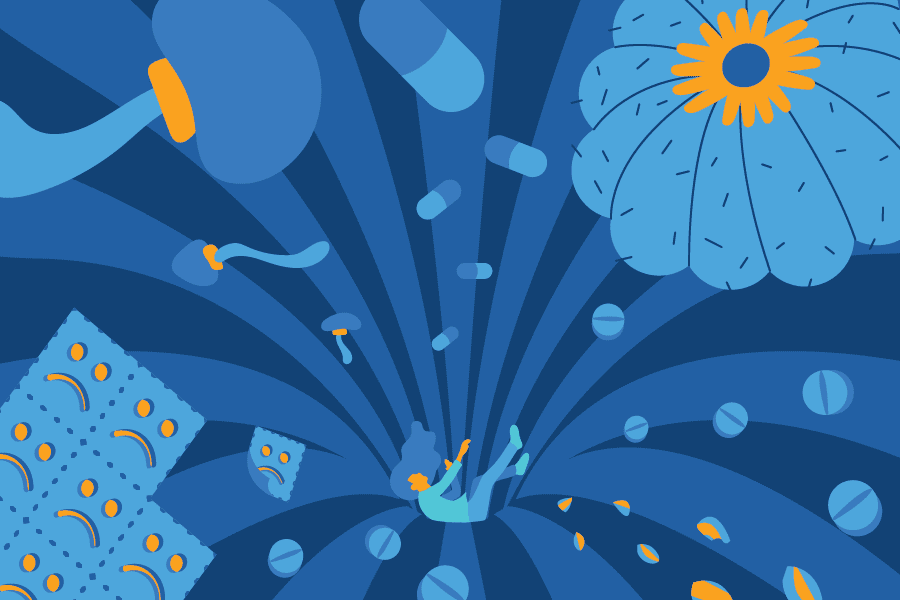Heroin and Opioid Addiction Crisis
Heroin and the spread of opioid usage have been a major headline in recent years. Many have begun to label the massive increases in heroin addiction, overdoses, and deaths as an epidemic affecting much of the country.
With opioid addiction occurring across America, parents are finding themselves attempting to navigate the difficult and often heartbreaking process of addiction treatment for their teens.
What are Heroin & Opioids?
Heroin and opiates are opioids – substances that affect opioid receptors in the brain and have a morphine-like effect on the user. Heroin is a type of opiate along with opium, morphine, oxycodone and many other painkillers. Opiates are a subclass of opioids, which are distinguished by their distinct molecular features.
Opiates are considered highly addictive and dangerous. Narcotic is another term that may be used to describe this entire drug class. Medically a heroin or opioid addiction is diagnosed and identified as an Opioid Use Disorder or OUD.
The Spread of Heroin Abuse & Addiction
Fifty years ago, heroin use was usually associated with the inner city, low-income, and minority individuals. Today that image is far from the reality. In the past decades, heroin and opioid use has moved through urban and suburban areas affecting people of all races and social and economic classes. Increasingly, it is the privileged white teen from an upper middle-class home outside a major urban center who is addicted to the drug.
Painkiller Use to Opioid Abuse
Many professionals have varying theories of how and why heroin addiction has surged. Prescription painkillers or medication in general is often where people begin: kids use prescription medication recreationally, get hooked on it and when it becomes too expensive and difficult to procure they move on to heroin.
Heroin is both readily available and very cheap to buy making it the easier drug to use. Others blame an over-prescribing of pain medication, which patients then become addicted to, eventually moving to the cheaper alternative of heroin.
However, others dispute the concept of chronic pain management being the jumping off point for the epidemic. While the full cultural and epidemiological picture of how this drug has grown has yet to become wholly apparent, it is evident that painkiller, opioid, and heroin addiction are becoming terribly commonplace.
The number of deaths and reports of Opioid Use Disorder is on the rise as is the number of teens and young adults entering heroin addiction rehab.
How Heroin is Used & the Dangers of Addiction
Heroin can be smoked or “freebased,” injected, snorted or taken as a suppository. Like all opiates, this drug and its chemically related prescription medications are incredibly addictive. Addiction becomes both physical and psychological and stopping drug use will result in severe withdrawal symptoms.
Additionally, using heroin also poses major risks. Injecting the drug can lead to illnesses such as hepatitis or AIDS/HIV and skin abscesses and infections due to shared needles. Drug use can also cause severe damage to the heart and kidneys.
The substances that are used to “cut” or dilute heroin also pose a huge health risk and are often attributed to both long-term illnesses and overdose deaths. In the past several years, it appears that heroin is either cut or mixed with more potent and lethal drugs, which has lead to some of the increases in overdoses and deaths.

Warning Signs of Heroin or Opioid Abuse
If you suspect your child is using heroin or prescription pain medication, seek treatment as soon as possible. The sooner they stop using and get their addiction treated, the better the results of treatment. Parents should be aware of some warning signs that signal a child may be using or at risk for using heroin:
- Been caught using substances
- Suspected or diagnosed underlying mental illness
- Finding prescription medications that are not prescribed or counterfeit medications (such as blues drugs)
- Paraphernalia associated with heroin: foil, needles, burnt spoons, small plastic baggies, etc.
- You live in an area where heroin is common and available
- Any of your child’s friends or peers have been linked to heroin use
Make sure to keep all prescription medications in your house in a safe place where they are not available to your child or his or her friends. Be aware if bottles or pills are missing.
If your child is prescribed pain medication make sure to discuss the risks of abusing this medication with your child and perhaps have a conversation that includes the prescribing doctor, yourself and your child.
Keep the discussion open and bring up any concerns you may have with the doctor and your child if necessary.
Co-occurring Mental Illness & Opioid Use Disorder
Like all substance addiction, Opioid Use Disorder (OUD) or heroin and painkiller addiction tend to develop in conjunction with underlying mental illness.
Most individuals with heroin addiction report some mental illness and may have some history of trauma, abuse or neglect. Personality disorders, depression, and anxiety are the psychiatric disorders most commonly linked to OUD.
If your child has experienced any trauma or has been diagnosed with a mental illness, make sure that he or she receives treatment and counseling. Many teens argue that they “are over” an issue or rough patch, but having a teen continue counseling as a means of support and preventive care may still be necessary.
Other substance abuse disorders, particularly alcohol dependence and addiction to benzodiazepines, are also strongly linked to OUD.
Those with addiction need to find substance addiction rehab programs that not only have expertise in heroin and opioid addiction but can also offer counseling and treatment for co-occurring mental illnesses. Treating the underlying disease is necessary if full, long term recovery is the goal.
Heroin Addiction Treatment
Opiate and heroin addiction requires specific treatment. Finding a teen or young adult heroin and prescription medication addiction rehab that can offer counseling for both addiction and co-occurring mental illnesses is a necessity for full, sustainable recovery.
This is not an issue that will simply get better or go away.
Finding an experienced professional and a treatment center that can treat your loved one will be the first step in overcoming addiction.
Discovering that your child or loved one is using heroin or has an addiction to painkillers can be devastating, and the path to sobriety can seem overwhelming. However, we can help support you and your child as you begin this journey.


Online Treatment Programs
Our virtual IOP program offers the same programming that we offer in person, all online – this is ideal for those who live too far to drive to an addiction center, have transportation issues, or have health concerns that make in-person treatment challenging.





